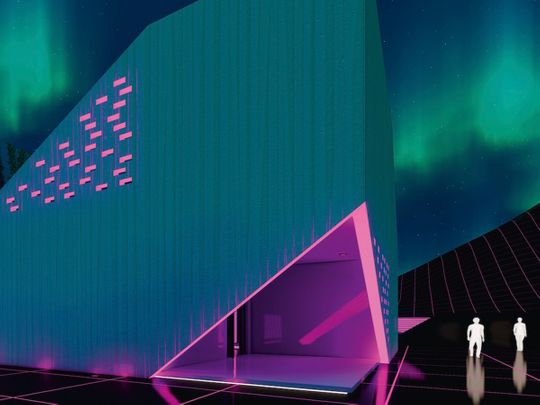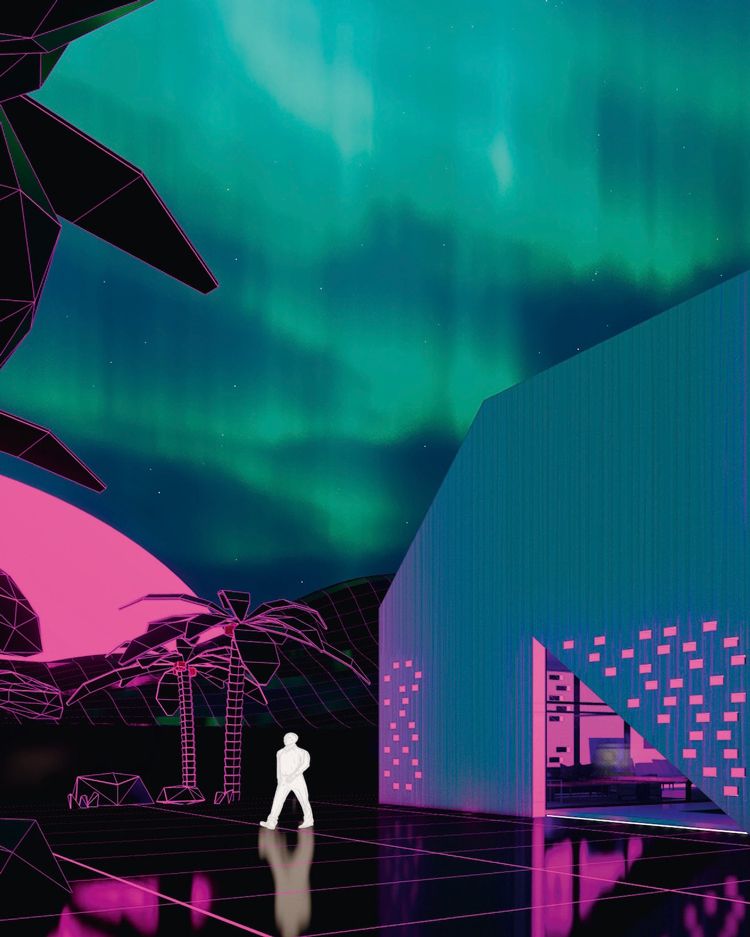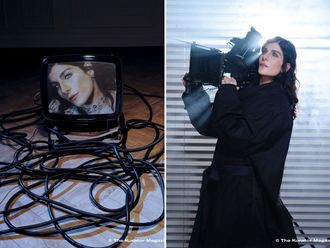
Dubai tech firm is exploring the Metaverse with an eye on design — rather than being just a visualization method, 4Space Design studio sees the metaverse as a designed form of space itself.
You could probably make the case for three significant revolutions in the world of architecture and interior design over the last 2,000 years. The first is the concrete revolution—thanks, Romans. And then there was steam, giving way to the industrial era with our necks craned towards the sky. Just how tall could we build them? Finally, the plastic revolution conveniently coincided with the Space Age, but despite the fantastical connotation it really just meant lava lamps. Lots and lots of lava lamps.
A fourth one is taking place now, the Metaverse revolution, because ordinary reality is getting a little too autocratic. “You can’t do that” doesn’t go down well with a generation that has access to incredible technologies that allow us to do that. To do anything.
In the digital world it’s possible, and virtual reality and augmented reality are changing the world of design. Firas Alsahin, designer and co-founder of Dubai’s 4SPACE DESIGN studio, believes that the Metaverse and you are closer than you think.
“In five years’ time all of us will own some sort of digital assets,” says Alsahin. “Whether it’s a contract, title deed or a certificate, or maybe a virtual property on virtual land. It’s going to be like owning a website on the Internet.”

The new frontier already has its Lewis and Clark (explorers of western North America in the early 19th century), with architecture and interior design designations evolving for a Metaverse that can be explored for its practical benefits, but also purely as art. Instead of just architects, 4SPACE is a studio that employs virtual architects, and instead of interior designers they are meta space designers.
“Brands and businesses will be more and more willing to be a part of the next big thing,” says Alsahin. “They will need to exist where their customers exist, and to do that, they need to invest in the virtual world.”
Alsahin’s investments started with a tech-savvy team to utilise the latest in early-2000’s technologies when the company was first founded in Damascus in 2001. Later moving to Dubai, 4SPACE advanced towards virtual reality, 3D modelling and augmented reality. “Then the term metaverse started becoming a buzz word in the technology world,” he says, “presenting many opportunities for architects and designers.”
“In the near future, users will be able to use augmented reality smart glasses which are wearable computer-capable glasses that add extra information, ideally 3D images and information such as animations and videos, to the user’s real-world scenes by overlaying the computer-generated or digital information over the user’s real-world,” says Alsahin.
And to create these metaverse environments, the industry will need more and more skilled designers and architects who are mastering future virtual and AI technologies. “We have software these days where you feed text descriptions and images to an AI so it will in return creates images and concepts,” says Alsahin. “The main question then becomes whether in fact AI will actually replace the creator? The answer is no.”
He believes in the Metaverse as a step forward in cultural evolution, and in the virtual world’s limitless capacity for art. “Virtual, augmented, and mixed reality technology will become important not just to present a designed space as a visualization method, but rather to be a designed form of space itself,” he says.
For Alsahin the Metaverse is something he has been dreaming of his whole life. When he was a little boy in Damascus he wanted to be a comic book artist when he grew up, spending his childhood days drawing sci-fi worlds and bringing them to life using Lego blocks. It has since become a bit more effective than that.
The Metaverse will evolve architecture and design thanks to technology, to advance more sustainable and biophilic design that’s closer in touch with our natural surroundings. “These high tech computers are not good enough at some ideas and you have to rely on human intelligence. But, this doesn’t mean automation and AI don’t have a place in architecture. The Metaverse has the potential to streamline processes and revolutionize productivity and our own imagination.”
“But beyond that,” adds Alsahin, “there is the very important aspect of sustainability, which is that when you design something, it should have longevity—that’s a truly sustainable approach. Design that doesn’t fade out, that still looks good over the years, is durable and reduces waste. Timelessness is a big deal in terms of sustainability.”
Metaverse artists and architects are already working on inspiring mental well-being when creating new spaces—we are now able to create simply better feeling worlds, environments that literally make the world a better and healthier place. Designers can foster a sense of belonging even in a virtual world, creating interiors that enhance your mood and get rid of stress. There has rarely been a revolution more worthy.






